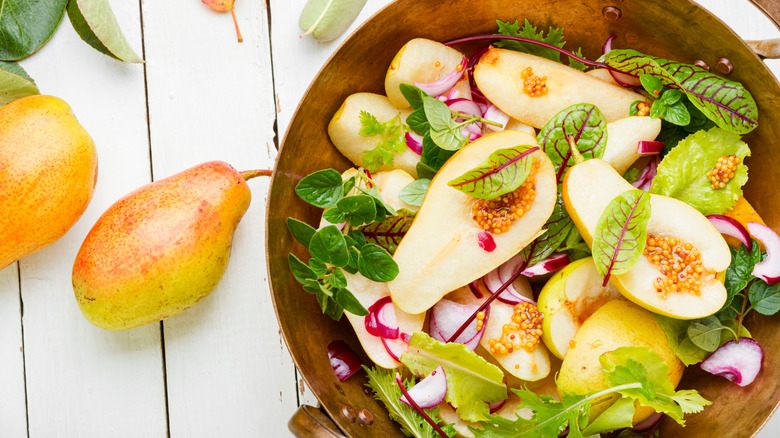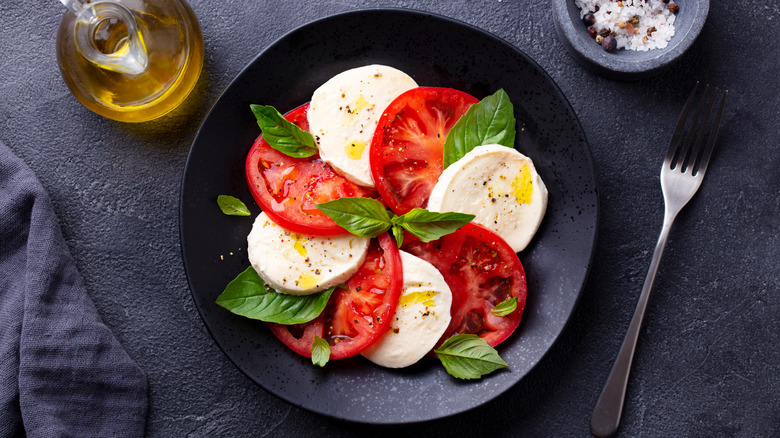Careful Construction Is Key For Making Restaurant-Quality Salads At Home
Order a salad at a restaurant, and it is as pretty as a painting — a fruit and vegetable still life, if you will. In comparison, your home salad looks more haphazard or, more generously, an abstract assemblage, à la Jackson Pollock. How can you achieve a more organized, picture-perfect salad at home?
While the first kinds of salads that might come to mind are the classic Cobb salad or a chicken Caesar, there are many more. The standard for made-at-home salads may be composed of lettuce, croutons, and bottled dressing, but really a salad can include all or none of these items. Think a caprese salad made of fresh tomato, basil leaves, mozzarella, and balsamic vinegar. A salad can even be warm with a mix of kale, rainbow chard, bacon, and sherry vinegar.
With so many kinds of salads, there's no one way to ensure that they look lovely when assembled. But we do have some tips for sprucing up their appearance, and it all comes down to giving the components the attention they deserve.
Attention to detail
Before you get to putting the salad ingredients on the plate, it's important to prep them so they look attractive. To do so, use a mandolin, hand peeler, or grater for a more delicate appearance, per America's Test Kitchen. They will be easier to eat than large chunks, as the acidic dressing will soften them, and they have more surface area to adhere to. Some fruits and vegetables such as apples, bell peppers, avocados, carrots, and zucchini should be kept raw, according to The New York Times, and then sliced thinly or julienned. Tougher fare like asparagus, broccoli, corn, and beets are best cooked a cut into bite-size pieces before added.
After the ingredients have all been prepped, assemble your salad with intention. Also called a composed salad or salade composée, the ingredients should have an organized appearance and the dressing can be served on the side, per Garlic Delight. Another trick for making an attractive salad from Epicurious is to season each ingredient separately before arranging them together.
When composing the ingredients on the plate, they can be arranged in a pile or next to each other, according to Culinary Lore. Consider what flavors complement each other and what colors look good next to each other when placing the ingredients. With a little attention to detail, you'll have your own salad masterpiece to enjoy.

